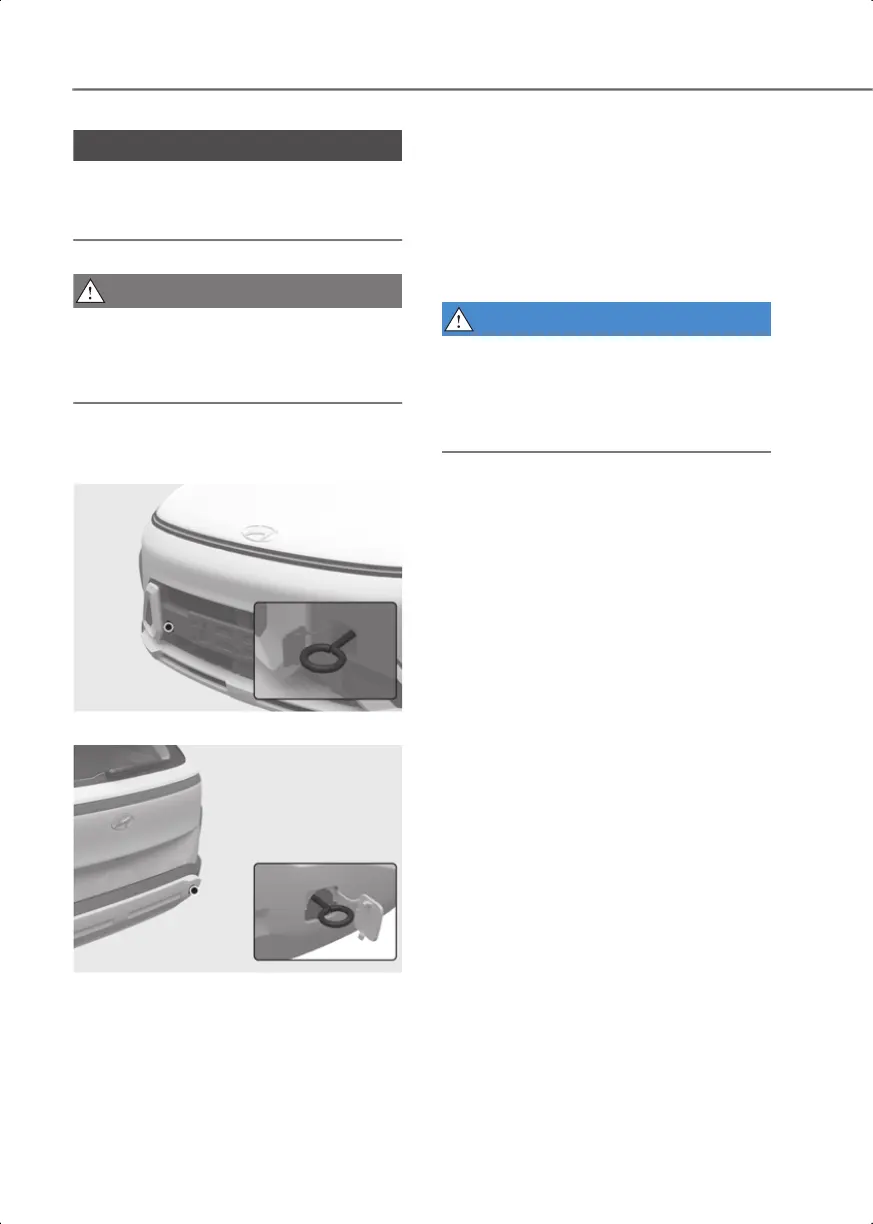Emergency Situations
8-28
Failure to properly tighten the towing
hook may result in vehicle damage and
deformation of related parts.
Make sure the towing hook is tighten
properly. If not, during towing the towing
hook may be thrown off the vehicle
resulting in serious injury or accident.
Emergency towing
Front
2C_TowingHookWithGeneralVehicle
Rear
2C_TowingHookWithGeneralVehicle_2
If emergency towing is necessary,
contact an authorized HYUNDAI dealer or
a commercial tow-truck service.
If tow-truck service is not available in an
emergency, your vehicle can be
temporarily towed using a cable or chain
secured to the removable towing hook at
the front (or rear) of the vehicle.
Perform emergency towing using cables
or chains on hard-surfaced roads for a
short distance and at low speeds. The
wheels, axles, powertrain, steering, and
brakes must all be in good working
condition.
Use extreme caution when towing the
vehicle with a cable or chain. A driver
must be in the vehicle to steer it and
operate the brakes. Passengers other
than the driver must not be in the vehicle.
Always follow these emergency towing
precautions:
• Press the Engine Start/Stop button to
the ACC position so the steering wheel
is not locked.
• Shift the gear in N (Neutral).
• Release the parking brake.
• Depress the brake pedal with more
force than normal because you have
reduced braking performance.
• More steering effort is required
because the power steering system will
be disabled.
• Use a vehicle heavier than your own to
tow your vehicle.
• The drivers of both vehicles must
communicate with each other
frequently.
• Before emergency towing, check that
the removable hook is not broken or
damaged.
• Fasten the towing cable or chain
securely to the hook.
• Do not jerk the cables, chains, or
removable hook. Apply steady and
even force.
Hyundai_SX2_en_US.book Page 28

